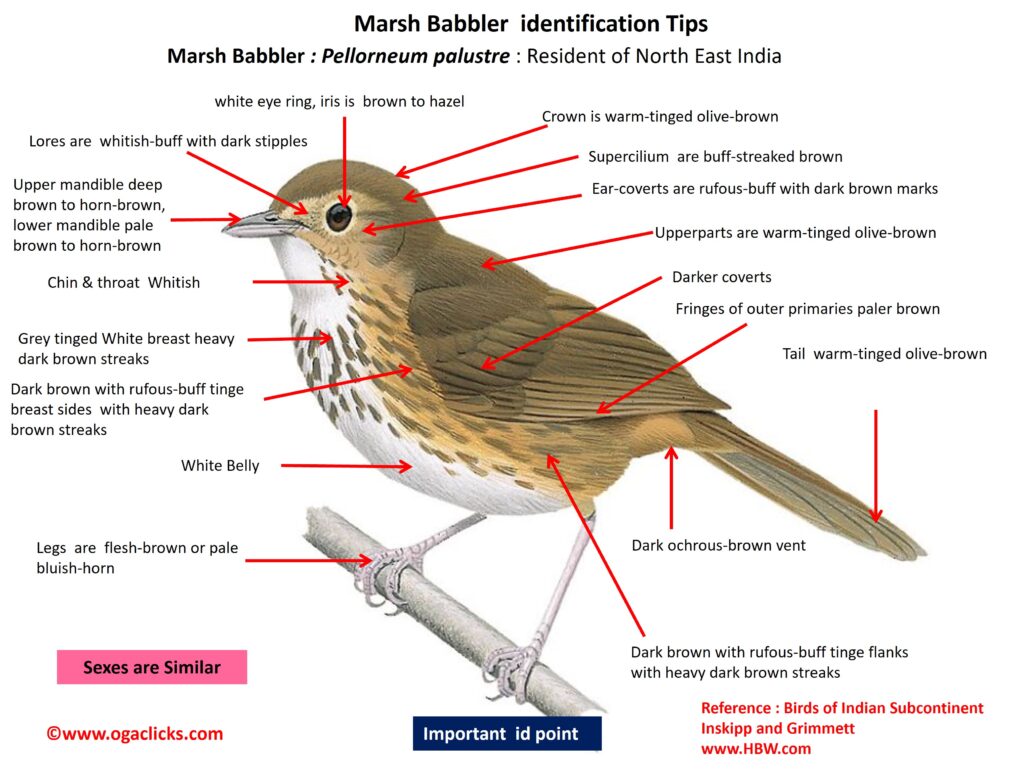
Marsh Babbler Pellorneum palustre
Etymology:
- Pellorneum : Greek word pellos- dark-coloured; orneon –bird.
- Palustre: Latin word for Marsh
Vernacular names : Cachar: Dao-priti-pit kashiba
Distribution in India: Resident of North East India.
Description: Size of 15 cm. It is a smallish round-tailed babbler, dark brown above and whitish below, with rufous-buff flanks and heavy dark breast streaks. The crown, upperparts, upperwing and tail are warm-tinged olive-brown, fringes of outer primaries are paler brown and contrasting with darker primary coverts. The lores are whitish-buff with dark stipples and adjoining whitish eyering, edged above pale rufous-buff in front of eye. The cheek and ear-coverts are rufous-buff with dark brown marks adjoining similar-coloured neck side. The submoustachial area is buff with dark flecking. The chin and upper throat are whitish, breast slightly grey-tinged white with heavy dark brown streaks of increasing length, breast side and flanks have a shading of dark brown with rufous-buff tinge. The belly is white, lower flanks, thighs and vent are dark ochrous-brown. The iris is brown to hazel; upper mandible is deep brown to horn-brown, lower mandible is pale brown to horn-brown; legs are flesh-brown or pale bluish-horn. Both the sexes are similar.
Habitat: It is found in reeds and coarse high grass bordering forest, swamps and rivers, elephant grass, savanna grassland, grass-jungle with trees, dense grass, bushes, shrubs and low tree-jungle on marshy ground, damp forest scrub. It is found from lowlands to 800 m.
Food habits: It eats small invertebrates and some vegetable matter. It is very skulking. It works its way through dense tall grass where large mammals have created tunnels, with “canopy.
Breeding habits: They breed in Feb–May. The nest is reportedly ball-shaped, made of grass, lined with finer grass or a few rootlets, placed on ground or among grasses and roots, covered by matted roots or fallen debris, inside tall grass, and reeds.